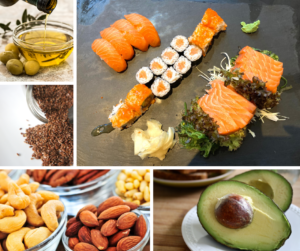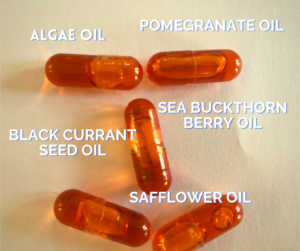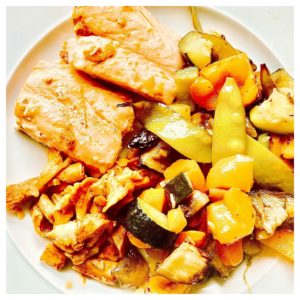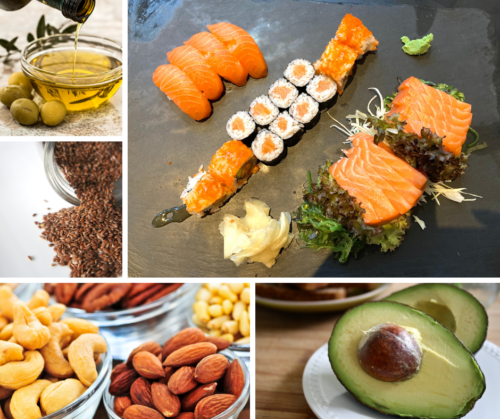Top 5 Healthy Fat Tips

10 Simple Tips To Get Fit & Healthy
July 8, 2020
NOOM Me Up For 2021! My Healthy Start To Shedding Those Festive Kilos
January 14, 2021Top 5 Healthy Fat Tips
Many people get confused about the right fats to implement in their diet. Are you one of those people? Well, I can tell you that this is a mind-boggling subject for many. Here I will show you the key differences and what types of fats nourish your body and those that may harm you long-term. These are my Top 5 Healthy Fat Tips of which I incorporate into my eating regime.
Please note: This post contains affiliate links. Please see Affiliate Disclaimer for further info.
Before we dive in and talk about those top 5 healthy fat tips, I want to give you rundown about the different types of fats as it’s vital to understand the difference. As part of a healthy diet, we should be consuming the right balance of healthy fats such as monounsaturated fats and polyunsaturated fats. Besides, it’s important to reduce foods that contain saturated fat and trans fat as these types of fats can harm our health. However, it’s important to eat fat because it helps the body to absorb the fat-soluble vitamins a d and e, so it plays a massive part in our overall health.
THE RUNDOWN ON FATS
Unsaturated fats come in two structures, Monounsaturated fats and Polyunsaturated fats.
Monounsaturated fats are great to assist weight loss, reduce inflammation and reduce the risk of heart disease as they are known to lower harmful cholesterol levels. You will find these in plant-based oils such as olive Oil, canola oil, sesame oil, avocados, almonds, brazil nuts and peanuts. This type of fat is also high in vitamin e.
Polyunsaturated fats include omega 3 and omega 6 and help to lower the bad cholesterol (LDL). Besides, they help to reduce the risk of heart disease and stroke. Oils such as sunflower, soybean and corn oils wells as nuts, seeds, and tofu produce are good options of polyunsaturated fats.
Saturated fats raise cholesterol levels and increase the risk of stroke and heart disease. Foods with this type of fat tend to be solid at room temperature and include foods such as fatty meats, high-fat dairy foods, cheese, butter lard, chocolate, cookies and certain oils. Men shouldn’t eat more than 30grams of saturated fat per day, and women should stay within the guideline of 20 grams.
Trans fats are a particular danger zone and are mainly artificially produced. They are found in hydrogenated vegetable oils and are added to foods to make them more solid and improve shelf life. Check food labels for trans fats and be aware of the health problems by overeating this type of fat. Fast foods, packaged and baked foods such as french fries, pizza, fried foods, pre-prepared dough, cakes pasties cookies and pies all fall under this category.
My Top 5 Healthy Fat Tips Revealed:
Tip 1. Bring On The Omega Fatty Acids
As previously mentioned, Omega fat is an essential fat for the body, and the whole omega family consists of 3,5,6,7 & 9. Omega 3 and Omega 6 are the ones that have most research, and there are ongoing trials with regards to the other fatty acids.
Omega 6 is found in vegetable oils and omega 3 from oily types of fish. It’s essential to add these to the diet as some types of omega 3 and 6 cannot be produced by the body. They have a variety of functions in the body such as brain health especially in pregnancy and early development. They may assist with heart health, reduce cholesterol, reduce inflammation, and they may even fight depression and anxiety.
How I Get All My Omegas Each Day

I take a great product that provides me with omega 3, 5, 6, 7 and 9 of which are all derived from plant-based sources and algae. Oil is minimally processed, making sure to keep the nutritional value intact. The Ingredients contain pomegranate seed oil, blackcurrant seed oil, tomato seed oil, safflower seed oil, and sea-buckthorn berry oil and I love them because the products close the gap between what I do eat and what I should eat.
So, if you are not a fish lover and would like to make sure that you are getting your daily recommended dose of Omega fatty acids, then check out my website and see what I am using – my personal nutrition “must-haves.”
Tip 2. Avocado
This mega superfood is rich in healthy fatty acids such as monounsaturated and polyunsaturated. It is high in vitamins and minerals as well as fibre and can assist your body to burn fat efficiently. Being low carb makes it an excellent food choice for weight loss. It tastes great with salads or sushi, and it makes a perfect guacamole recipe.
Tip 3. Salmon

Salmon is one of my all-time favourite foods, and I love to eat it as Sashimi. It is an excellent source of lean protein and is full of omega 3 fatty acids. It’s an excellent source of vitamin B, & D, as well as minerals such as phosphorus, selenium and potassium. This type of fish does have more calories than most other fish; therefore, one feels full after eating it. It also boosts brain health and may reduce the risk of heart disease. So step up on some good quality salmon and if you eat it as Sashimi always make sure it’s fresh.
Tip 4. Extra Virgin Olive Oil
Olive oil has so many benefits. I even use it on my skin and in my hair. It’s excellent and is full of antioxidants as well as vitamin e and k and may protect against inflammation as well as lowering blood pressure and cholesterol. Olive oil is quite calorie-dense so make sure you use it sparingly if you are on a weight management program. Try swapping butter for olive oil when cooking too.
Tip 5. Flaxseeds
Flaxseeds are full of omega 3 and 6 fatty acids as well as mega amounts of fibre. I eat these every day with natural yoghurt along with chia seeds. They are low in sugar, are an excellent valuable source of protein and packed with vitamins and minerals. Try adding these to your daily yoghurt or smoothies.
Get Friendly With The Good Fats!
Fat is an essential part of our health and eaten because it has many valuable functions in the body. It keeps us warm and insulates or organs. Besides, fats give our body energy and support cell growth. So make sure you are getting good fats in your diet every day. Be aware of products that are labelled fat free as these may contain high amounts of added sugar.
Listen to this blog text on Youtube:
Check Out My Weekly YouTube Videos: 5 Top Healthy Fat Tips
Follow me on Facebook & Subscribe on YouTube.
COVER IMAGE: 6 Cover Images (Avocado, Olive Oil, Seeds, Nuts) all from Canva – Free licenced Photos. Salmon Sushi & Omega Capsules Photos belong to Jo Mac.
DISCLAIMER – PLEASE READ FULL DISCLAIMER
The information in this blog is for educational purposes only and not meant to replace any advice given by a medical practitioner or nutritional therapist. You must consult your doctor before embarking on any diet or nutritional/exercise program detailed on this website, especially if you are pregnant, nursing, taking medication, or have a medical condition. Your doctor knows what is right for you.
The eating regime mentioned above does not serve as a cure or prevention for any illness, disease or medical problems. And it is also not recommended for people under the age of 18 years.
If you engage in any of the information provided on this website (and mobile version), you do so solely at your own risk. You agree that you are voluntarily participating in these activities and that you assume all risk of injury to yourself.
When you buy through links on this website, I will earn a commission or an affiliate commission. See AffiliateDisclaimer




